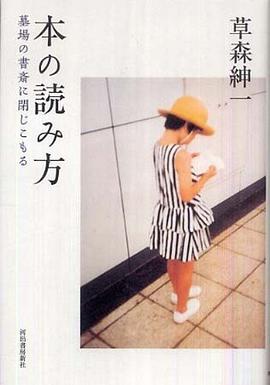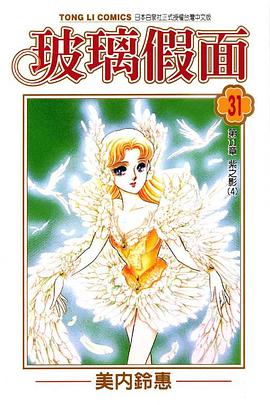
具体描述
作者简介
目录信息
ANALYTICAL TABLE OF CONTENTS
Foreword by Andre M. Weitzenhoffer
Introduction
ONE
A Conversational Induction: The Early Learning Set
Observation and Erickson's Basic Approach
The Conscious and Unconscious in Clinical Hypnosis
The Utilization Theory of Hypnotic Suggestion
Truisms Utilizing Mental Mechanisms
Truisms Utilizing Time
Not Doing, Not Knowing
TWO
Indirect Induction by Recapitulation
The "Yes Set"
Psychological Implication
The Bind and Double Bind Question
The Time Bind and Double Bind
The Conscious-Unconscious Double Bind
The Double-Dissociation Double Bind
A General Hypothesis About Evoking Hypnotic Phenomena
Reverse Set Double Bind
The Non Sequitur Double Bind
Contrasting the Therapeutic and Schizogenic Double Bind
Unconscious and Metacommunication
Open-Ended Suggestion
Suggestions Covering All Possibilities of a Class of Responses
Ideomotor Signaling
THREE
The Handshake Induction
Confusion in the Dynamics of Trance Induction
Dynamics of the Handshake Induction
The Handshake Induction
Compound Suggestions
The Paradigms of Acceptance Set, Reinforcement or Symbolic Logic
Compound Statements
The Paradigms of Shock and Creative Moments
Contingent Suggestions and Associational Networks
Multiple Tasks and Serial Suggestions
FOUR
Mutual Trance Induction
The Surprise
The Confusion-Restructuring Approach
Therapeutic Trance as a State of Active Unconscious Learning
FIVE
Trance Learning by Association
The Implied Directive
Questions that Focus, Suggest and Reinforce
Questions for Indirect Trance Induction
The Fragmentary Development of Trance
Depotentiating Conscious Mental Sets: Confusion, Mental Flux, and Creativity
SIX
Facilitating Hypnotic Learning
Displacing and Discharging Resistance
Multiple Levels of Communication: Analogy, Puns, Metaphor, Jokes, Folk Language
The Microdynamics of Suggestion
SEVEN
Indirectly Conditioned Eye Closure Induction
Trance Training and Utilization
The Dynamics of Indirect and Direct Suggestion
Indirect Conditioning of Trance
Voice Dynamics in Trance
Intercontextual Cues and Suggestions
Right- and Left-Hemispheric Functioning in Trance
EIGHT
Infinite Patterns of Learning: A Two-Year Follow-Up
Infinite Possibilities of Creativity, Healing, and Learning
NINE
Summary
The Nature of Therapeutic Trance
Trance Viewed as Inner Directed States
Trance Viewed as a Highly Motivated State
Trance Viewed as Active Unconscious Learning
Trance Viewed as an Altered State of Functioning
The Subjective Experience of Trance
Clinical Approaches to Hypnotic Induction
Orientation to Hypnotic Induction
Approaches to Hypnotic Induction
Depotentiating Habitual Frames of Reference
Indicators of Trance Development
Ratifying Trance
The Forms of Hypnotic Suggestion
The Nature of Hypnotic Suggestion
Indirect Approaches to Hypnotic Suggestion
Structuring an Acceptance Set
Utilizing the Patient's Associative Structure and Mental Skills
The Facilitation of Human Potentials
REFERENCES
· · · · · · (收起)
Foreword by Andre M. Weitzenhoffer
Introduction
ONE
A Conversational Induction: The Early Learning Set
Observation and Erickson's Basic Approach
The Conscious and Unconscious in Clinical Hypnosis
The Utilization Theory of Hypnotic Suggestion
Truisms Utilizing Mental Mechanisms
Truisms Utilizing Time
Not Doing, Not Knowing
TWO
Indirect Induction by Recapitulation
The "Yes Set"
Psychological Implication
The Bind and Double Bind Question
The Time Bind and Double Bind
The Conscious-Unconscious Double Bind
The Double-Dissociation Double Bind
A General Hypothesis About Evoking Hypnotic Phenomena
Reverse Set Double Bind
The Non Sequitur Double Bind
Contrasting the Therapeutic and Schizogenic Double Bind
Unconscious and Metacommunication
Open-Ended Suggestion
Suggestions Covering All Possibilities of a Class of Responses
Ideomotor Signaling
THREE
The Handshake Induction
Confusion in the Dynamics of Trance Induction
Dynamics of the Handshake Induction
The Handshake Induction
Compound Suggestions
The Paradigms of Acceptance Set, Reinforcement or Symbolic Logic
Compound Statements
The Paradigms of Shock and Creative Moments
Contingent Suggestions and Associational Networks
Multiple Tasks and Serial Suggestions
FOUR
Mutual Trance Induction
The Surprise
The Confusion-Restructuring Approach
Therapeutic Trance as a State of Active Unconscious Learning
FIVE
Trance Learning by Association
The Implied Directive
Questions that Focus, Suggest and Reinforce
Questions for Indirect Trance Induction
The Fragmentary Development of Trance
Depotentiating Conscious Mental Sets: Confusion, Mental Flux, and Creativity
SIX
Facilitating Hypnotic Learning
Displacing and Discharging Resistance
Multiple Levels of Communication: Analogy, Puns, Metaphor, Jokes, Folk Language
The Microdynamics of Suggestion
SEVEN
Indirectly Conditioned Eye Closure Induction
Trance Training and Utilization
The Dynamics of Indirect and Direct Suggestion
Indirect Conditioning of Trance
Voice Dynamics in Trance
Intercontextual Cues and Suggestions
Right- and Left-Hemispheric Functioning in Trance
EIGHT
Infinite Patterns of Learning: A Two-Year Follow-Up
Infinite Possibilities of Creativity, Healing, and Learning
NINE
Summary
The Nature of Therapeutic Trance
Trance Viewed as Inner Directed States
Trance Viewed as a Highly Motivated State
Trance Viewed as Active Unconscious Learning
Trance Viewed as an Altered State of Functioning
The Subjective Experience of Trance
Clinical Approaches to Hypnotic Induction
Orientation to Hypnotic Induction
Approaches to Hypnotic Induction
Depotentiating Habitual Frames of Reference
Indicators of Trance Development
Ratifying Trance
The Forms of Hypnotic Suggestion
The Nature of Hypnotic Suggestion
Indirect Approaches to Hypnotic Suggestion
Structuring an Acceptance Set
Utilizing the Patient's Associative Structure and Mental Skills
The Facilitation of Human Potentials
REFERENCES
· · · · · · (收起)
读后感
评分
评分
评分
评分
评分
用户评价
评分
评分
评分
评分
评分
相关图书
本站所有内容均为互联网搜索引擎提供的公开搜索信息,本站不存储任何数据与内容,任何内容与数据均与本站无关,如有需要请联系相关搜索引擎包括但不限于百度,google,bing,sogou 等
© 2026 qciss.net All Rights Reserved. 小哈图书下载中心 版权所有





















